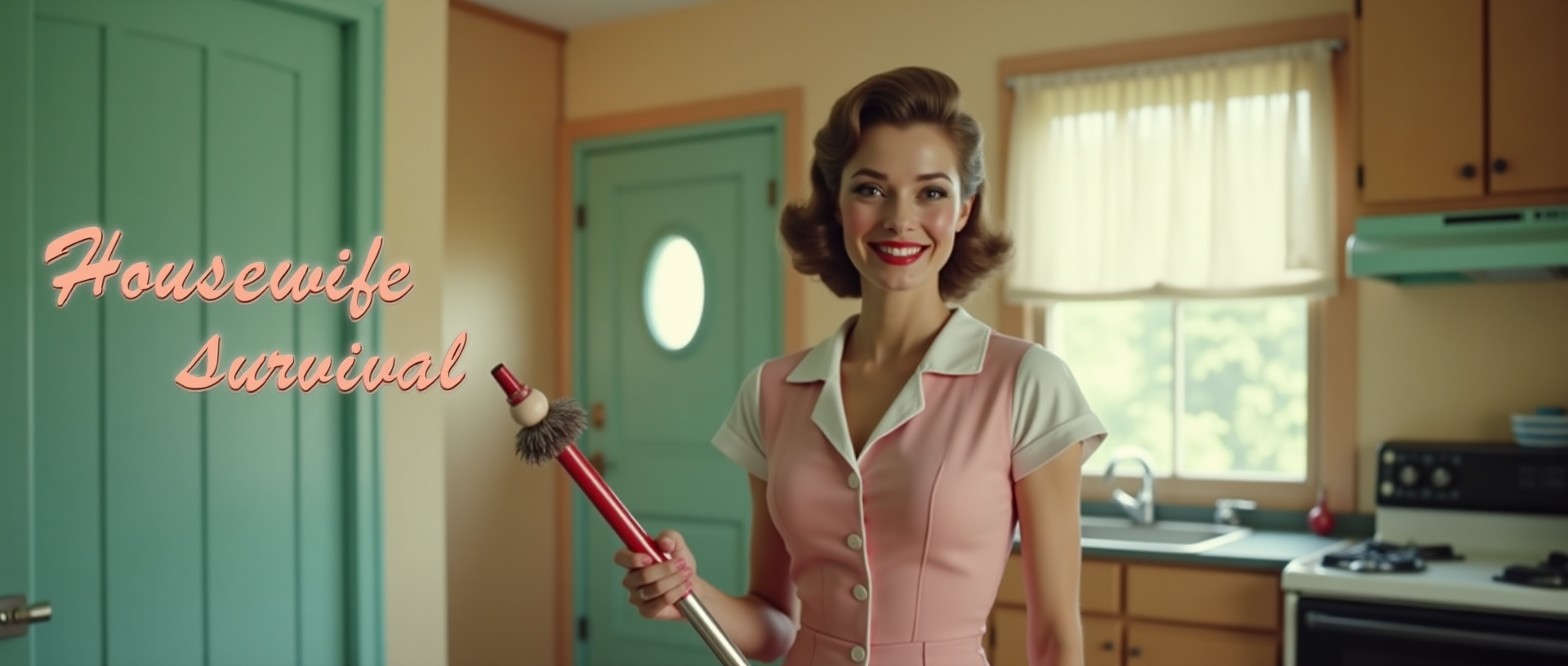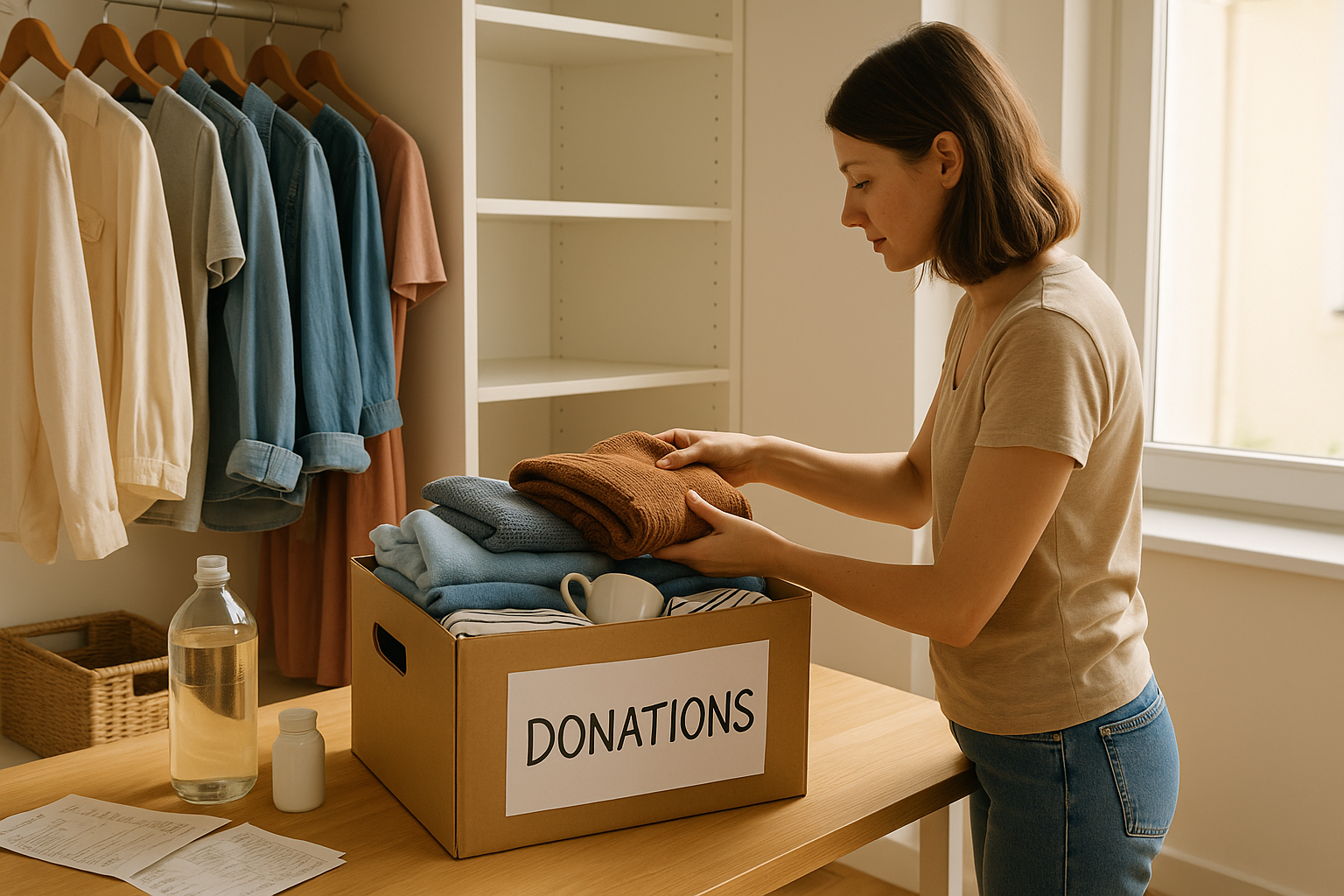Table of Contents
If you’re holding onto stuff you never use because getting rid of things feels like a whole complicated project involving research and guilt trips and deciding whether something is “good enough” to donate, this is for you.
You know that moment when you’re trying to declutter and you find something that’s perfectly fine but you just don’t want it anymore, and then you spend twenty minutes debating whether it’s worth donating or if you should just keep it because dealing with donations feels harder than just shoving it back in the drawer? Meanwhile, the clutter creeps back because you can never actually get rid of anything without having a whole emotional crisis about it.
You’ve tried decluttering, but then you end up with bags of stuff sitting in your car for months because you never get around to actually dropping them off. Or worse, you dig through the donation bags and rescue half the items because you started second-guessing your decisions. Before you know it, you’re back where you started but now with more guilt about being wasteful.
Here’s what changed my relationship with letting go of stuff: I started using donation box organization like it was my job, and suddenly getting rid of things became automatic instead of agonizing. This isn’t about being ruthless or minimalist – this is about making donation so easy that you actually follow through instead of just moving clutter around.
Why Donation Box Organization Is Your Decluttering Superpower
Look, the biggest problem with decluttering isn’t finding things to get rid of – it’s actually getting rid of them. You make the hard decision to let something go, but then it sits around your house in limbo forever because donation feels like this whole production.
Good donation box organization eliminates the friction between “I don’t need this” and “this is gone from my house.” When you have a system that makes donation automatic, you stop overthinking every single item and start actually clearing space in your home.
The genius of donation box organization is that it removes the guilt and decision fatigue from the process. You’re not throwing things away – you’re giving them a chance to be useful to someone else. And you’re not making the decision seventeen times – you make it once when it goes in the box, and that’s it.
The Set-It-and-Forget-It Donation Box Organization System
Step 1: Pick One Designated Donation Spot
Choose one closet, corner, or area where your donation box organization lives permanently. Don’t move it around or try to hide it in different places. Make it as accessible as your trash can because that’s basically what it is – a trash can for things that are too good to throw away.
I keep mine in the hall closet near the front door because when it’s full, I can grab it on my way out and drop it off without making a special trip. The key is making your donation box organization work with your natural traffic patterns instead of against them.
Step 2: Use a Box That Demands Action When Full
Don’t use some tiny decorative basket that never fills up. Get a actual cardboard box or bin that holds a decent amount of stuff but isn’t so huge that it takes forever to fill. When it’s full, it should be slightly annoying to live with so you’re motivated to deal with it.
The perfect size for donation box organization is big enough to hold a week’s worth of decluttering discoveries but small enough that a full box feels manageable to transport. I learned this the hard way when I used a giant bin that took three months to fill and then was too heavy for me to carry when it was finally full.
Step 3: Make a “No Second Chances” Rule
Once something goes in your donation box organization system, it doesn’t come back out. No digging through to rescue items, no “let me just check if I put something important in there,” no changing your mind. The box is like a one-way portal – things go in and disappear from your life permanently.
This is the hardest part of donation box organization but also the most important. The minute you start retrieving items, you’ve destroyed the system and turned your donation box back into temporary storage for things you’re not sure about.
Step 4: Keep It Simple – No Sorting Required
Your donation box organization doesn’t need categories or careful arrangement. Clothes, books, kitchen items, random stuff – it all goes in together. Don’t spend time folding donation clothes or organizing items by type. The point is to get things out of your living space, not to create a beautiful donation display.
I used to waste so much time carefully folding and organizing donation items like I was running a boutique. Now I just toss things in and close the box. The charity will sort it out – that’s literally their job.
Step 5: Set a Full-Box Action Plan
Decide ahead of time what happens when your donation box organization system is full. Maybe you drop it off on your next grocery store trip. Maybe you schedule a pickup if your charity does that. Maybe you recruit your teenager to handle the drop-off in exchange for gas money.
The key is having a plan that doesn’t require motivation or energy when the time comes. When the box is full, you follow the predetermined plan without debate or delay.
Step 6: Replace and Repeat Immediately
As soon as you drop off a full box, replace it with a new empty box the same day. Don’t let your donation box organization system have gaps where you’re back to letting unwanted items pile up because you don’t have anywhere to put them.
I keep a few extra boxes in my garage so I can swap them out immediately. The system only works if it’s always available and ready for the next round of decluttering discoveries.
What Donation Box Organization Actually Looks Like Day-to-Day
With good donation box organization, getting rid of things becomes thoughtless. You’re cooking dinner and notice you have three can openers but only need one – the extras go straight to the donation box. You’re getting dressed and realize you haven’t worn that sweater in two years – into the box it goes.
The decision-making happens in real-time during normal life instead of during big overwhelming decluttering sessions. You’re not setting aside whole weekends to agonize over possessions – you’re just living your life and naturally releasing things that aren’t serving you anymore.
I probably put something in my donation box organization system every few days without thinking about it. A book I didn’t enjoy, a kitchen gadget I never use, clothes that don’t fit right – they just migrate naturally toward the donation box because it’s there and available.
The Psychology Behind Why This Works
Donation box organization works because it separates the decision to let go of something from the action of actually getting rid of it. You’re not deciding “should I donate this AND when will I take it AND is it good enough for donation” all at once. You’re just deciding “do I want to keep this or not.”
The box creates a buffer zone between your stuff and permanent removal, which makes the initial decision easier. But unlike keeping things in limbo forever, the full-box rule ensures that buffer zone has an expiration date.
Plus, donation box organization builds momentum. The more you use it, the easier it becomes to let go of things because you’ve proven to yourself that you don’t miss items once they’re gone.
When Donation Box Organization Gets Tricky
You’ll be tempted to rescue things from the box, especially expensive items or things with sentimental value. This is normal, but stick to the no-rescue rule anyway. If you’re truly unsure about an item, don’t put it in the donation box in the first place – put it in a “maybe” pile and decide later.
Sometimes family members will dig through your donation box organization and rescue items. Set clear boundaries about this being off-limits, or use a box with a lid if necessary. Explain that the system only works if everyone respects the one-way rule.
You might also face guilt about “wasting” things or worry that you’re being too hasty. Remember that keeping things you don’t use isn’t preventing waste – it’s just moving the waste from a charity that could use them to your closet where they help nobody.
Making Donation Box Organization Work for Your Life
If you have a large family, consider multiple donation boxes in different areas – one upstairs for bedrooms, one in the kitchen area for household items. But don’t create so many that maintenance becomes complicated.
For families with kids, teach them the system early. Kids are actually great at donation box organization because they haven’t developed adult attachment issues yet. Make it a game or routine part of seasonal clothing switches.
If you live in a small space, adapt the size but keep the concept. Even a donation bag or small bin works if you commit to emptying it regularly when full.
The Real Benefits of Good Donation Box Organization
After using donation box organization consistently for two years, my house stays significantly less cluttered without me having to think about it. I don’t accumulate as much random stuff because I have an automatic outlet for things I don’t need.
More importantly, I’ve lost the guilt and anxiety around getting rid of possessions. It’s no longer this big emotional decision – it’s just a practical action that makes my life easier and potentially helps someone else too.
The mental space I gained from not storing a bunch of stuff I never used has been incredible. I can find things I actually need, my closets aren’t bursting, and cleaning is faster because there’s less stuff to work around.
When Donation Box Organization Isn’t Enough
Sometimes you’ll have items that are too valuable or specialized for regular donation – like expensive electronics, designer clothes, or collectibles. These might warrant selling instead of donating, but don’t let the complexity of selling prevent you from clearing them out. Set a time limit for selling attempts, then donate anyway if they don’t sell.
For truly sentimental items, donation box organization isn’t the right solution. These need more thoughtful consideration and probably shouldn’t be decided in the moment during regular decluttering.
Broken or damaged items shouldn’t go in donation boxes – they should go straight to trash. Charities don’t want your broken stuff any more than you do.
The Bottom Line
Donation box organization isn’t about being generous or charitable, though those are nice side effects. It’s about creating a frictionless system for removing unwanted items from your life so you can actually enjoy the space and possessions you do care about.
When getting rid of things becomes as easy as throwing them away, you stop holding onto stuff out of laziness or decision avoidance. When you remove the guilt and complexity from donations, decluttering becomes natural instead of overwhelming.
Set up your donation box organization system this week. Get a box, pick a spot, and start using it immediately. You’ll be amazed how much easier it becomes to let go of things when you have a simple, automatic system for getting them out of your house.
Because life’s too short to live surrounded by stuff you don’t want just because getting rid of it feels too complicated, and your peace of mind is worth more than a closet full of items you never use but can’t bring yourself to donate.

